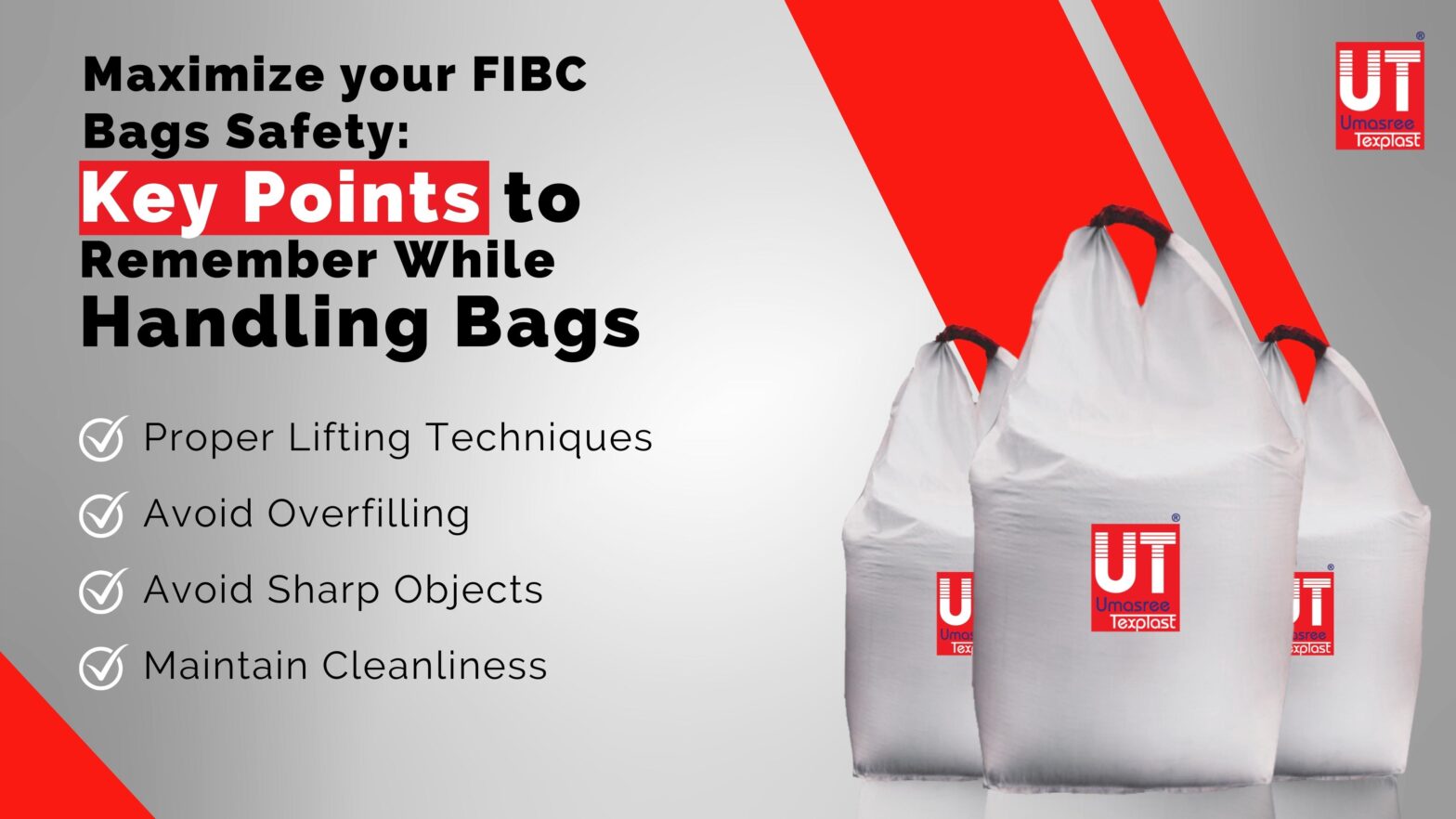Maximize your FIBC Bags Safety: Key Points to Remember While Handling Bags

Flexible Intermediate Bulk Containers (FIBC), commonly known as bulk bags, big bags, or super sacks, play a paramount role in several industries for storing and transporting numerous bulk and dry materials like grains, chemicals, minerals, cement, sand, and more.
However, handling FIBC bags requires careful consideration of safety and efficiency. A minuscule mistake while moving FIBC bags can result in massive inventory damage and even jeopardize people’s lives.
Hence, critical points and guidelines provided by your FIBC bag manufacturer must be followed thoroughly for safe handling. In this article, we will walk you through key points to remember while handling FIBC bags.
Critical Points to Remember While FIBC Bags Handling
Inspect the Bag
Thoroughly inspect the FIBC before use to identify any damage, such as tears, cuts, or loose threads. Ensure that it meets the safety standards and specifications required for your application.
Proper Lifting Techniques
When lifting FIBC bags, use appropriate lifting equipment such as forklifts, cranes, or hoists, and follow safe lifting practices. Ensure the lifting equipment is rated for the bag’s weight capacity.
Avoid Overfilling
Stay within the bag’s maximum weight capacity, as indicated on the bag’s label. Overfilling can lead to bag failure, posing safety risks and causing content spillage.
Keep Bags Dry
Moisture can weaken the fabric and compromise the bag’s integrity. Hence, store FIBC bags in dry and cool environments to keep them free from moisture and structural integrity intact.
Avoid Sharp Objects
Be cautious when handling FIBC bags around sharp objects or edges, as they can puncture or damage the bag’s fabric. Use protective measures to prevent accidental damage.
Proper Stacking
If you need to stack FIBC bags, follow safe stacking guidelines. Ensure that the bottom bag is on a flat, stable surface to prevent tipping or collapsing.
Use Correct Filling and Discharging Procedures
Follow the manufacturer’s recommendations for filling and discharging materials from FIBC bags. Using the correct procedures ensures the bag’s stability and eliminates spillage.
Maintain Cleanliness
Keep the area around FIBC bags clean and debris-free. Contaminants or foreign objects can affect the bag’s contents and its integrity.
Labeling and Documentation
Maintain clear labeling and documentation of the bag’s contents, weight, and handling instructions. It helps prevent confusion and ensures proper handling.
Storage Considerations
Store FIBC bags away from direct sunlight, extreme temperatures, and potential heat sources or ignition. Proper storage conditions extend the bag’s lifespan.
Training and Awareness
Train personnel in proper FIBC handling techniques, including safety precautions and emergency response procedures. Awareness of potential hazards is crucial for accident prevention.
Conclusion
After reading the blog, you will have comprehended the critical points to consider while handling FIBC bags to minimize the risk of spillage and inventory damage from sharp objects and prevent accidents or damage.
Note: Always lift your FIBC Bags with all loops to avoid load shifting and falling of bags from height.
For any questions or more tips, feel free to contact us at +91-99099 57564 or email mail@umasree.com
Refer to our other blog, “3 Mistakes To Avoid While Handling FIBC Bags,” for your reference.





